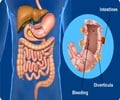FGFBP3 (BP3 for short) might offer novel therapy to reverse disorders associated with metabolic syndrome, such as type 2 diabetes and fatty liver disease.

"We found that eight BP3 treatments over 18 days was enough to reduce the fat in obese mice by over a third," says the study's senior investigator, Anton Wellstein, MD, PhD, a professor of oncology and pharmacology at Georgetown Lombardi Comprehensive Cancer Center.
The treatments also reduced a number of obesity-related disorders in the mice, such as hyperglycemia -- excess blood sugar that is often linked to diabetes -- and eliminated the fat in their once fatty livers. Clinical as well as microscopic examination of the mice showed no side effects, researchers say.
Obesity, which affects more than 650 million people worldwide, is the major driver for metabolic syndromes, which includes disorders such as insulin resistance, glucose intolerance, hypertension and elevated lipids in the blood.
BP3 belongs to the family of fibroblast growth factor (FGF) binding proteins (BP). FGFs are found in organisms ranging from worms to humans and are involved in a wide range of biological processes, such as regulating cell growth, wound healing and response to injury. Some FGFs act like hormones.
BP1, 2, and 3 are "chaperone" proteins that latch on to FGF proteins and enhance their activities in the body. Wellstein has long researched the BP1 gene because its production is elevated in a range of cancers, suggesting that growth of some cancers is linked to the excess delivery of FGFs. Only recently has Wellstein turned his attention, and that of his lab and colleagues, to BP3 to understand its role.
Advertisement
"We found that BP3 exerts a striking contribution to metabolic control," Wellstein says. "When you have more BP3 chaperone available, FGF19 and FGF21 effect is increased through the increase of their signaling. That makes BP3 a strong driver of carbohydrate and lipid metabolism. It's like having a lot more taxis available in New York City to pick up all the people who need a ride."
Advertisement
Source-Eurekalert















